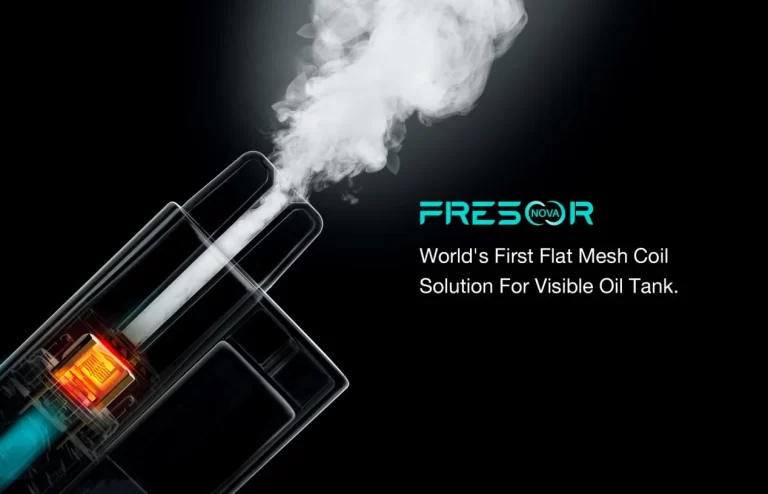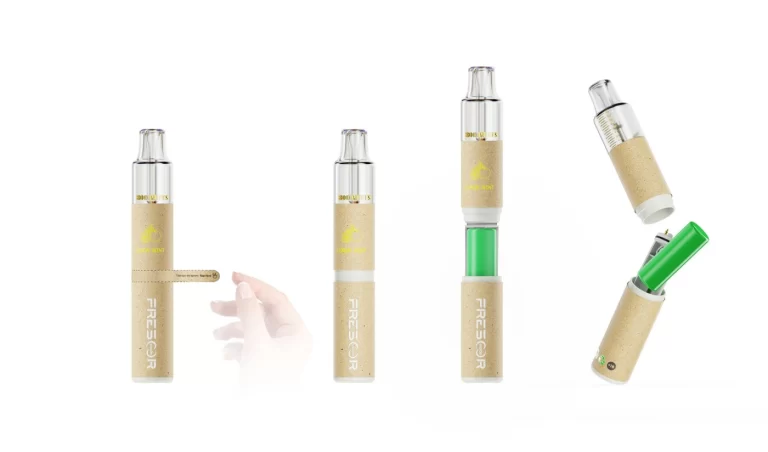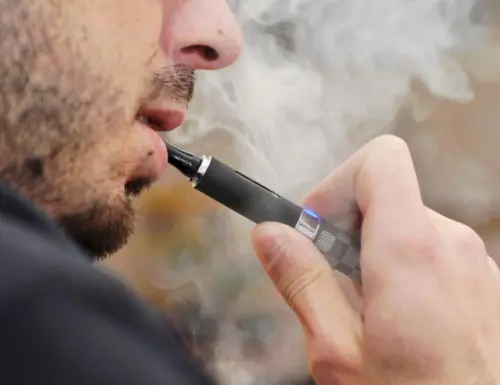
Image Credits: medicalnewstoday.com
Vaping, the modern alternative to smoking, has become a common sight in our daily lives. It promises a healthier alternative to traditional cigarettes, but beneath the sweet-scented clouds lies a growing concern – second-hand vape. While the health risks associated with first-hand vaping are well-documented, there is growing concern about the potential dangers of second-hand vape exposure.
As you’ve probably seen someone exhale a puff of vapor, you might wonder, “Is it harmless?”
In this article, we’ll take a closer look at the risks and dangers of second-hand vape.
What is a Second-Hand Vape?
Second-hand vape refers to the exposure of non-vapers to vapor produced by e-cigarettes or other vaping devices. This type of exposure is also known as passive vaping or environmental vapor, and it occurs when a person inhales the aerosol exhaled by an e-cigarette user.
While second-hand smoke from traditional cigarettes is well-known and has been extensively studied, there is still limited research on the potential health risks of second-hand vape. However, preliminary studies suggest that the vapor from disposable vape products may contain harmful chemicals and particles that can have negative effects on those who are exposed to it.
Some common misconceptions about second-hand vape include:
- It is completely harmless.
- It smells better than tobacco smoke.
- It is less harmful than inhaling second-hand cigarette smoke.
- It is only a concern for those who are allergic or sensitive to chemicals.
Who is at Risk of Second Hand Vape?
Those at risk of second-hand vape exposure include:
- Non-vapers who are near e-cigarette users.
- Children, adolescents, and pregnant women.
- People with preexisting health conditions.
- Nonsmokers and ex-smokers.
- Workers in environments where vaping is common.
It is important to note that second-hand vape not only affects those who are exposed to it, but it can also harm the overall air quality in indoor spaces. This is especially concerning for enclosed areas where there is a high concentration of vape cigarette users, such as vaping lounges or bars.
Second-Hand Vaping Vs Second-Hand Smoking
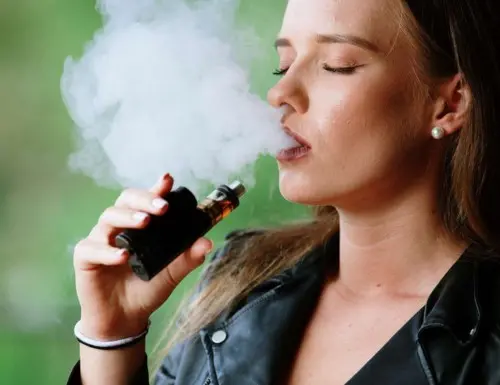
Image Credits: people.com
Passive smoking is a serious issue that has been affecting people for years. It refers to the inhalation of smoke from vapes, cigarettes, pipes, or cigars by nonsmokers who are in close proximity to smokers. This can result in various health problems, such as lung cancer, heart disease, and respiratory infections.
Second-Hand Smoking
Second-hand smoke contains over 7,000 chemicals, including at least 70 that can cause cancer. When a nonsmoker is exposed to second-hand smoke, they are inhaling these harmful chemicals, which can have serious health consequences.
Some of the risks associated with second-hand smoke include:
- Lung cancer
- Heart disease
- Respiratory infections (e.g. bronchitis and pneumonia)
- Ear infections
- Asthma attacks in children
These risks are particularly concerning for children and infants, as their lungs and immune systems are still developing.
Second-Hand Vaping
In contrast to second-hand smoke, the vapor produced by vaping is not known to contain any carcinogens. However, there is still limited research on the potential health effects of second-hand vaping.
Some studies have shown that second-hand vaping may release some chemicals and ultrafine particles into the air but at much lower levels than second-hand smoke. These particles can potentially irritate the respiratory system, but there is currently no evidence to suggest that they are as harmful as those found in second-hand smoke.
Some of the risks associated with second-hand vaping include:
- Wheezing
- Coughing
- Respiratory issues
- Nicotine Addiction
Is Second-Hand Vape Harmful for Health?
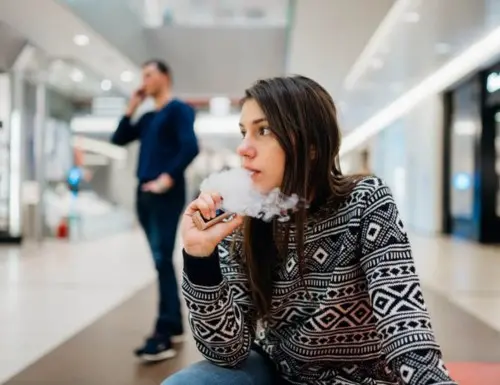
Image Credits: smokeynews.com
While many vapers believe that second-hand vaping is harmless, there is growing evidence to suggest that it may pose a risk to human health. Studies have shown that e-cigarette aerosol contains a mixture of potentially harmful chemicals, including formaldehyde, ethylene glycol, and heavy metals.
Research has also shown that second-hand vaping can increase the risk of heart disease, respiratory problems, and asthma attacks.
What does Science Say?
A study conducted by the National Institutes of Health found that e-cigarette aerosols contain toxic metals such as nickel, chromium, lead, and manganese. These metals have been linked to a variety of health problems, including cancer and brain damage.
Another study by the American Heart Association found that e-cigarettes can cause the stiffening of arterial walls and an increase in oxidative stress, which can lead to cardiovascular disease.
The Health Hazards of Second-Hand Vape Exposure
Vaping is often advertised as a healthier alternative to smoking and has gained acceptance in many circles. If you’re a vaper, it is essential to understand that second-hand vape exposure can be harmful to those around you.
Below are some health hazards associated with second-hand vape exposure that every vaper should know.
- Cancer: E-cigarettes contain carcinogens like formaldehyde, increasing the risk of lung and bladder cancer for non-vapers exposed to the aerosol.
- Asthma: Second-hand vape exposure can trigger asthma attacks due to the irritants in e-cigarette aerosol.
- Heart Disease: Vaping produces acrolein, linked to heart disease, by causing artery hardening, elevating the risk for non-vapers.
- Respiratory Illness: Particulate matter in e-cigarette aerosol can lead to bronchitis and pneumonia in those exposed, harming the respiratory system.
- Brain Development: Children and adolescents exposed to second-hand vape aerosol are at risk of cognitive and behavioral problems due to nicotine’s impact on brain development.
What to Do if You Encounter Second-Hand Vape?
If you encounter second-hand vape, there are a few things you can do to protect yourself and others.
Below are some steps you can consider:
- Move away from the source: If possible, distance yourself from the person vaping or the area where the vape cloud is present.
- Avoid inhaling: Hold your breath for a brief moment when passing through a vape cloud to minimize your exposure.
- Use protective equipment: If you have access to a mask or respirator, wear it to filter out any harmful substances from the vape cloud.
- Speak up: Inform the person vaping about how their actions may be affecting those around them and politely ask them to stop.
Things You Should Keep in Mind While Vaping
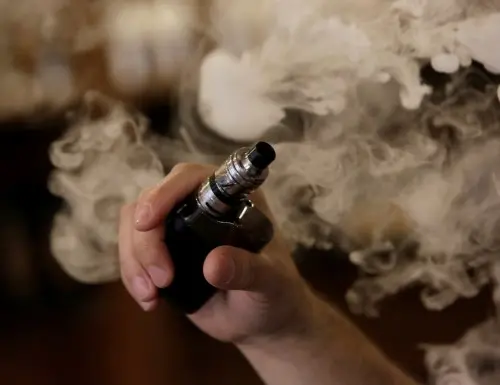
Image Credits: brookings.edu
Like traditional cigarettes, vaping involves inhaling and exhaling potentially harmful chemicals that can cause harm. While it may offer a ‘healthier’ option compared to conventional smoking, there are still some things you should keep in mind while vaping to ensure your safety and well-being.
- Protect Those Around You: Remember that your vaping can affect the health of non-vapers, especially in enclosed spaces. Be considerate of others.
- The Unknown Risks: While vaping is often considered less harmful than smoking, the long-term effects of second-hand vape exposure are not fully understood. Stay informed as research evolves.
- Advocate for Regulation: Support policies and regulations that promote responsible vaping practices and protect public health.
- Responsible Vaping: Vape in designated areas when possible and avoid vaping around children, pregnant women, and individuals with respiratory conditions.
- Stay Informed: Keep up with the latest research and safety guidelines to make informed choices about your vaping habits.
By being responsible and staying informed, you can enjoy vaping while minimizing potential risks to those around you.
FAQs
- Is it safe to vape around children?
It is not safe to vape around children. Second-hand exposure to e-cigarette aerosol can harm their developing respiratory systems and may introduce them to nicotine, which is harmful.
- Is second-hand vape bad for you?
Second-hand vape exposure can be harmful. While it’s generally considered less dangerous than second-hand smoke from traditional cigarettes, it can still pose health risks, including respiratory issues and potential nicotine exposure. Minimizing exposure is advisable.
- Is second-hand vape worse than first-hand?
First-hand vaping poses direct risks to the user, while second-hand vape exposure presents indirect risks to those nearby. First-hand exposure is typically riskier, but both have potential health consequences and avoiding both is the safest option.
- Is second hand vape the same as smoke?
Second-hand vape is not the same as second-hand smoke from conventional cigarettes. While both can have health risks, e-cigarette aerosol contains fewer harmful chemicals than cigarette smoke.
- Can second-hand vape smoke affect pregnancy?
Yes, second-hand vape exposure during pregnancy can affect fetal development. It may lead to adverse outcomes such as preterm birth and low birth weight.
- Does second-hand vaping affect asthma?
Second-hand vaping can exacerbate asthma symptoms. The chemicals in e-cigarette aerosol may irritate the airways, triggering asthma attacks in individuals with the condition.
Bottom Line
While the long-term effects of second-hand vape are still unknown, there is no doubt that its exposure can be dangerous for some people. Therefore, it’s wise to reduce exposure to second-hand vape as much as possible. If you’re somebody who vapes regularly, recognize the potential hazards and risks it could pose to those around you, and make sure others have their safety in mind.
Prevention is always better than cure!






